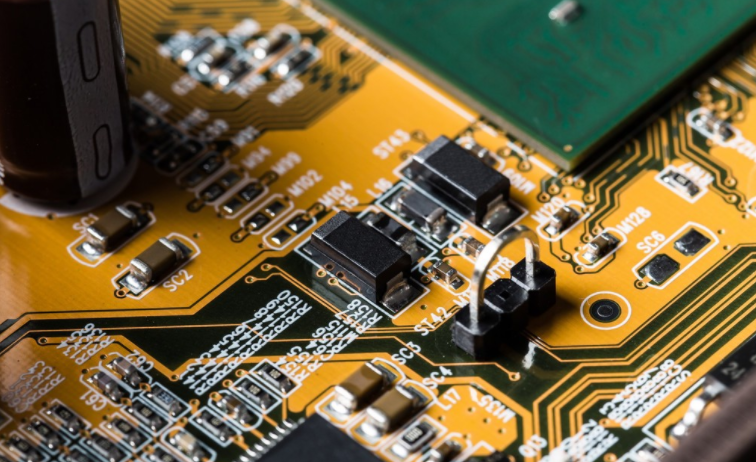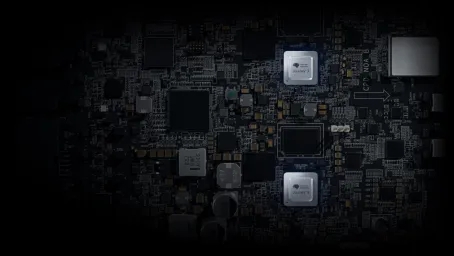
Master the design skills of these six kinds of PCB multilayer boards
p> 1. PCB board can be divided into single-sided, double-sided and multilayer boards in structure
Multilayer board refers to a printed board with more than two layers, which is composed of connecting wires on multilayer insulating substrate and bonding pads used for assembling and welding electronic components High speed function PCB board s is usually designed as multilayer board Common multilayer boards are generally 4-ply or 6-ply, and complex multilayer boards can reach dozens of layers
2. Characteristic PCB multilayer board

The difference between the multi layer PCB and the single sided and double sided boards is that the internal power supply layer (maintaining the internal electrical layer) and the surrounding layer are added The power supply and grounding grid are mainly wired in the power layer However, multilayer board wiring is mainly based on the top and bottom layers, supplemented by intermediate wiring layers
Multilayer PCB board is mainly composed of the following layers: signal layer, inner plane layer, mechanical layer, Slider mask layer, screen layer, and system layer
We have many advantages, such as high assembly density and small size; Shorten connection between electronic components, fast signal transmission rate, and convenient wiring; The mask effect is good
3. Multilayer design PCB board
Each layer should be symmetrical, and it is an even number of copper layers If it is not symmetrical, it is easy to cause distortion The wiring of the multilayer board is carried out according to the circuit function When wiring in the outer layer, more wiring is required on the welding surface and less wiring is required on the component surface, which is conducive to the maintenance and troubleshooting of the printed circuit board For wiring, it is necessary to separate the power layer, ground layer and signal layer to reduce interference between power sources, ground and signal The lines of two adjacent layers of the printed circuit board shall be as perpendicular to each other as possible, or follow oblique lines and curves, but not parallel lines, so as to reduce the interlayer coupling and interference of the substrate
4. size and number of layers
The shape and size of the printed board must be based on the overall structure of the product. From the perspective of production technology, it should be as simple as possible. Generally, the aspect ratios of rectangles are not very different, so as to facilitate assembly, improve production efficiency and reduce labor costs
In terms of the number of layers, the circuit board size and circuit density must be determined according to the circuit efficiency requirements It is used for multilayer printed boards, and four - and six layer boards are widely used
Each layer of the multilayer board should be symmetrical, and it is an even number of copper layers, that is, four, six, eight, etc Because of the asymmetric lamination, the board surface is easy to warp, which is especially suitable for surface mounted multilayer boards. What aspects should be paid attention to
5.. Position and orientation of components
The position and placement direction of components should first be considered from the perspective of circuit principles and cater to the trend of the circuit. Whether the layout is reasonable or not will directly affect the performance of printed boards, especially for high-frequency analog circuits. The location and placement requirements of components are obviously stricter Therefore, when engineers start to arrange the layout of printed circuit boards and decide the overall layout, they should first determine the location of special components (such as large scale ICs, high-power transistors, signal sources, etc.), and then arrange other components to avoid possible interference factors On the other hand, the overall structure of the printed circuit board should be considered to avoid uneven and out of order component arrangement This not only affects the appearance of PCB, but also brings a lot of inconvenience to assembly and maintenance
6. Requirements for wire layout and wiring area
In general, conduct multi-layer PCB wiring according to circuit functions When wiring in the outer layer, more wiring is required on the welding surface and less wiring is required on the component surface, which is conducive to the maintenance and troubleshooting of the printed circuit board Thin, easily disturbed dense wires and signal wires are usually arranged in the inner layer Large area copper foil should be evenly distributed in the inner and outer layers, which will help reduce the warpage of the circuit board and achieve a more uniform coating on the surface during electroplating To prevent damage to the printed wire and interlayer short circuit during processing, the distance between the conductive pattern in the internal and external wiring areas and the edge of the circuit board should be greater than 50 mils
7.. Requirements for the direction of the wire
The multi layer board traces should separate the power layer, so as to reduce interference between power supplies, grounding and signals The lines of two adjacent layers of the printed circuit board shall be as perpendicular to each other as possible, or follow oblique lines and curves, but not parallel lines, so as to reduce the interlayer coupling and interference of the substrate The wire should be as short as possible, especially for small signal circuits. The shorter the wire, the smaller the resistance and the smaller the interference
8.. Requirements for safe distance
The setting of the safety distance should meet the requirements of electrical safety. In general, the spacing between outer conductors shall not be less than 4 mils and that between inner conductors shall not be less than 4 mils If the wiring can be arranged, the spacing should be as large as possible to improve the yield of the board and reduce the potential failure of the finished board
9. Requirements for improving the anti-interference ability of the whole board
In the design of multi layer printed boards, we must also pay attention to the anti-interference ability of the whole circuit board Add filter capacitors near the power supply and grounding of each IC, with a capacity of 473 or 104. For sensitive signals used on printed circuit boards, separate mask wires should be added, and the wiring should be as close to the signal source as possible Select a reasonable grounding point PCB board







